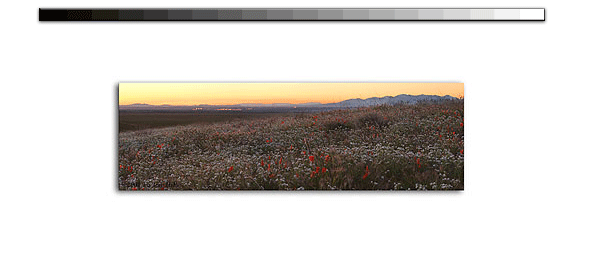|
While the Ancient Bristlecone Pine Forest is relatively well known, there are surprisingly few images from this wonderful location. Perhaps it's the 8,000 ft climb up winding roads that deters travelers from visiting the location. Maybe people dismiss the location becuase few of it's virtues "bang out" and hit you in the head with their qualities. I don't know. But, in my book, if you spend any time in the Owens Valley or Eastern Sierra Mountains, you have to spend some of your time with these wonderful trees.
The Ancient Bristlecon Pines are reputed to be the oldest living things on the planet. That's really old! One specimen was measured to be over 5,000 years old almost before the beginning of recorded human history. This seedling sprouted when the Egyptians were just getting their acts together.
There are many reasons for such long lived plants. The extreme altitude and extremely short growing season deters most competing plants. As well, the plants are very robust when they're under duress. If a portion of the plant is dying, it will cutoff resources to that section so as to preserve life in the rest of the tree. What that means many stags looking far gone and long deceased are actually living and clinging to life. A small thread of green may still be active in the dead looking tree. Many of those pictures of broken, stark looking trees are of real live specimens. I think this quality adds to the mystery of the tree.
To walk among living things connected to ages long past and forgotten is like stepping on to an alien planet. The terrain is extremely bleak with rocks and sand as far as the sky can see. The altitude takes an immediate toll on those that aren't used to the oxygen deprevation--I'm one of those guys. A single road runs through the National Forest but beyond that, you could easily walk 100 yards and not see any human influences as far as the eye could see. What you do see are small groves or lonely setinals of trees looking like family groups or individuals. It's very easy to discern the indiviual trees from a forest of Bristlecone Pines. Nothing fills the gap between the trees.
Groves are isolated. Drive for a couple miles and see nothing as far as the eye could see. Then pop! A tree crests the approaching ridge. My first reaction is how'd that tree get here because it'd look so solitary. What other tree did this seedling sprout from? Answers no one probably knows.
Shooting at 11,000 feet above sea level introduces new challenges. Light is a confusing and problematic issue. At that altitude, color balance shifts considerably to the cool side. If you brain wasn't smart enough to compensate for this phenomenon, you'd see very blue trees, rocks, critters, and birds. Everything would have a blue tint. Fortunately, your brain is savy enough to allude to the right colors and remove most of that "unnatural" tinting. Your camera isn't that smart. Most people shoot with a "warming filter" to eliminate the blue color. They call them warming filters because blue emotes a cool feeling while yellow and red are physicologically warmer. If you're shooting with a digital camera, I usually set the camera's white balance to "shade" which applies the largest compensation for cool environments. Still, while the problem is there, don't let it confuse you from making your images. There are tons of ways to remove the problem in your digital darkroom. Another issue that's a problem is bright light at sea level is extremely harsh. At 11,000 feet it's 10 times as harsh. Little if any light is diffused. That means the shadows are extremely harsh and dramatic. As a result, I shoot when the light is least--sunrise and sunset. Beyond that, picture taking becomes an exercise in reducing the harsh shadows by using fill light from your flash.
I found the best results photographing these trees by concentrating on their very interesting wood and grain. There's plenty of dead or dying trees around that make great subjects. This image was taken about 200 yards off the road looking towards the Owens Valley--Mt Whitney is the middle of the mountain range. All I did was pick an especially interesting feature of my subject tree and figure out a composition from there. In this case, I wanted to balance the brightness of the setting sun with the tree.
I made the image by splicing two pictures together to make one in a landscape format. The biggest challenge was making sure the colors were right so no lines were visible to the casual or determined observer. There are a whole series of steps to make these kind of images. Together, the techniques are worthy of their own article which one of these days I'll get to. Hope you enjoy this as much as I enjoyed making it.
Cheers
Tom Hill
|




